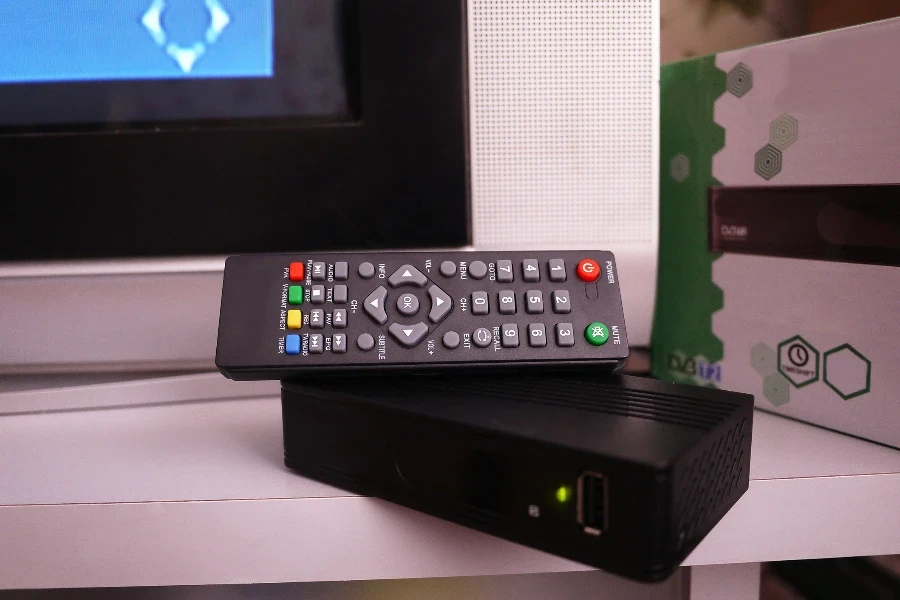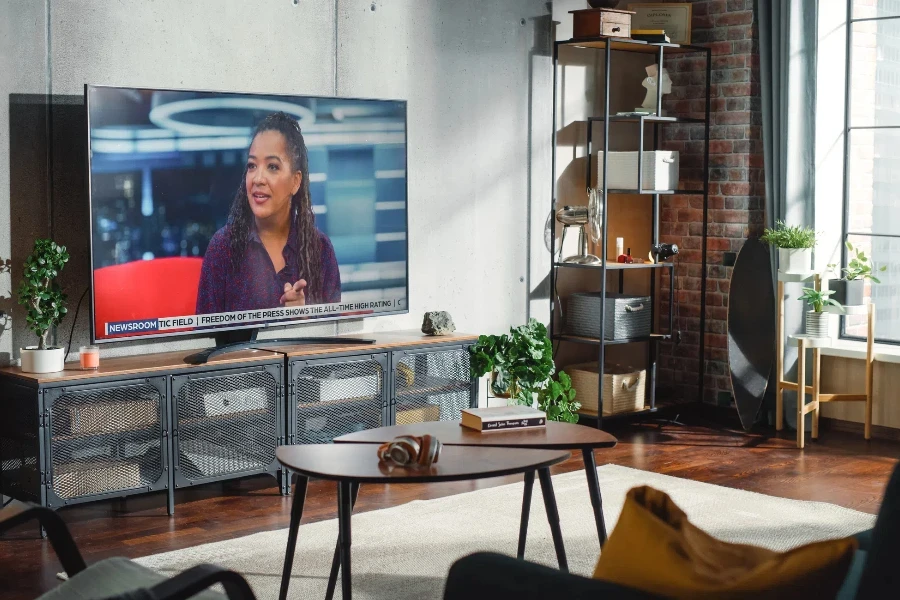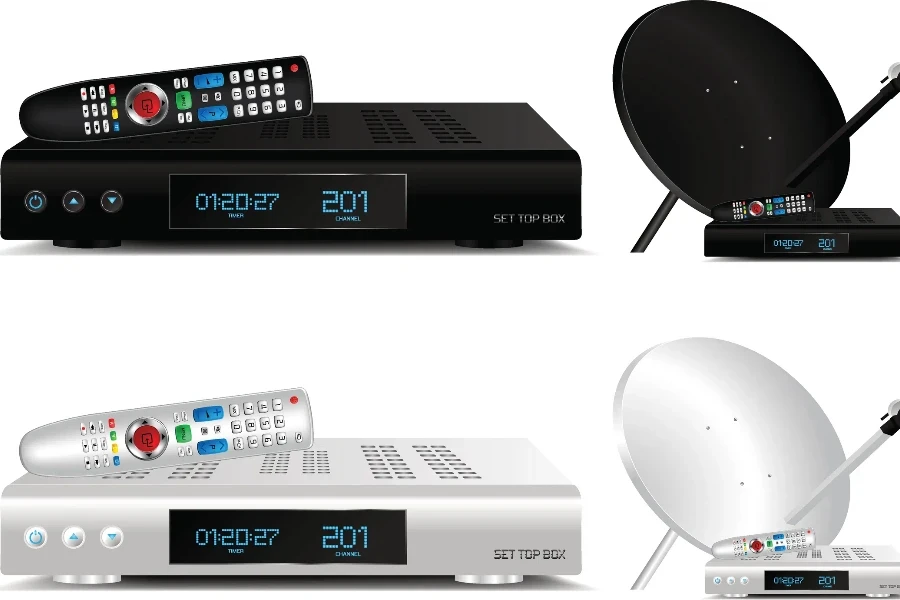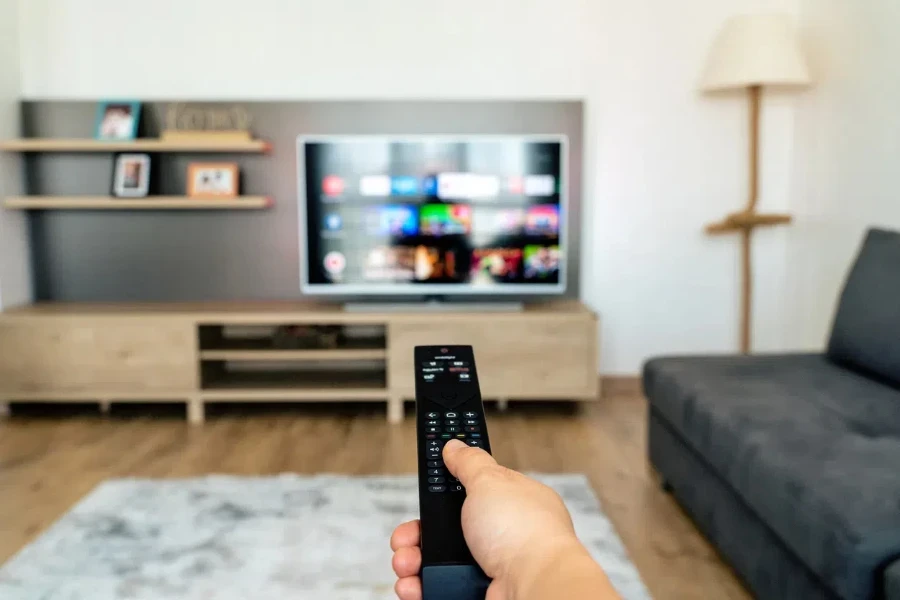As of late 2024, the global set-top box market has reached a revenue of US$12.0 billion, with projections indicating continued growth into 2025. This trend underscores the increasing demand for advanced TV peripheral devices among consumers, making it crucial for business buyers to stay ahead in selecting the best set-top boxes for their markets.
Table of Contents:
– Market Overview of Set-Top Boxes
– Detailed Analysis of the Set-Top Box Market
– Key Drivers and Trends in the Set-Top Box Market
– Key Factors to Consider When Selecting Set-Top Boxes
– Enhancing User Experience with Set-Top Boxes
– Future-Proofing Your Set-Top Box Investment
– Wrapping Up
Market Overview of Set-Top Boxes

The global set-top box market has seen considerable growth in recent years, reaching a revenue of US$12 billion in 2024. This market is projected to grow at a compound annual growth rate (CAGR) of 7.10% from 2024 to 2029, indicating a robust upward trajectory. In 2024, the United States led the market with the highest revenue of US$3,295 million. The average revenue per user (ARPU) in the TV peripheral devices market is anticipated to be US$7.08 by 2029.
By 2029, the volume in the TV peripheral devices market is expected to reach 352.9 million units. This growth is driven by increasing consumer demand for high-quality and diversified content delivery systems. The per person revenue in 2024 was US$1.55, highlighting significant market penetration and consumer spending on these devices. The volume growth rate is projected at 9.3% for the year 2025, indicating a continued rise in unit sales.
The demand for smart streaming devices is particularly strong, with the United States generating a revenue of US$2.7 billion in 2024. The market for smart streaming devices is expected to grow at a CAGR of 6.27% from 2024 to 2029, reaching 70.6 million units by 2029. This reflects a shift in consumer preferences towards more advanced and integrated entertainment solutions.
Detailed Analysis of the Set-Top Box Market

Key performance benchmarks in the set-top box market include high-definition resolution, user interface design, and connectivity options. The market is dominated by major players such as Samsung, LG, and Sony, who continuously innovate to maintain competitive advantages. Innovations such as 4K resolution, HDR support, and integrated streaming services are crucial differentiators in this space.
Market share dynamics are influenced by economic factors like disposable income and internet penetration rates. For instance, countries with high-speed internet availability and higher per capita income, such as Japan and South Korea, show higher adoption rates for advanced set-top boxes. Seasonal demand patterns also play a significant role, with peak sales typically occurring around major sporting events and holiday seasons.
Consumer behavior is shifting towards on-demand content and streaming services, reducing the reliance on traditional cable and satellite TV. This trend is evident in markets like India, where the OTT video streaming market continues to flourish post-pandemic. Despite the rise in streaming services, the affordability and one-time investment of free-to-air (FTA) set-top boxes remain attractive to many consumers.
Key Drivers and Trends in the Set-Top Box Market

- Digitalization and Connectivity: Advances in digital technology and high-speed internet are driving the demand for smart set-top boxes. These devices offer enhanced features such as voice control, integration with smart home systems, and access to a wide range of streaming platforms.
- Environmental Regulations: Increasing environmental regulations are pushing manufacturers to develop energy-efficient and eco-friendly set-top boxes. This includes the use of recyclable materials and energy-saving technologies to reduce the carbon footprint.
- Consumer Pain Points: Common consumer pain points include the complexity of setup and operation, limited compatibility with other devices, and high costs of subscription services. Addressing these issues through user-friendly designs, broader compatibility, and cost-effective solutions can significantly enhance market penetration.
In conclusion, the set-top box market is poised for significant growth driven by technological advancements, changing consumer preferences, and economic factors. Companies that can innovate and address consumer pain points will likely see substantial market share gains in the coming years.
Key Factors to Consider When Selecting Set-Top Boxes

When selecting a set-top box for your business, several critical factors ensure you choose a product that meets your needs in terms of performance, compatibility, and cost-effectiveness.
Performance and Functionality
Processing Power
The processing power of a set-top box is crucial for its performance. High-end models typically feature multi-core processors, ensuring smooth operation, quick response times, and the ability to handle high-definition content without lag. For example, the Amlogic S905X4 processor is popular in many high-performance set-top boxes due to its efficiency and power.
Memory and Storage
Memory (RAM) and storage capacity are essential for the overall functionality of the set-top box. A minimum of 2GB of RAM is recommended for smooth operation, with 4GB or more preferred for high-end models. Storage capacity, often starting at 8GB, should be expandable via microSD cards or USB drives to accommodate more apps and media files.
Operating System
The operating system (OS) of a set-top box can significantly impact its user experience and compatibility with apps. Android TV and proprietary systems like Roku OS are popular choices. Android TV offers extensive customization and access to the Google Play Store, while Roku OS is known for its user-friendly interface and broad app support.
Compatibility and Connectivity
HDMI and AV Outputs
Ensure the set-top box has the necessary outputs to connect to your display devices. HDMI is the standard for high-definition video and audio, but AV outputs may be necessary for older TVs. HDMI 2.0 or higher is recommended for 4K content to ensure optimal performance.
Wi-Fi and Ethernet
Connectivity options are vital for streaming content. Dual-band Wi-Fi (2.4GHz and 5GHz) offers better performance, especially for 4K streaming. Ethernet ports provide a stable and faster connection, crucial in environments with multiple devices connected to the network.
Bluetooth and USB Ports
Bluetooth support allows for the connection of peripherals like keyboards, mice, and game controllers, enhancing the functionality of the set-top box. USB ports are also important for connecting external storage devices or other peripherals.
Latest Technology Features
4K and HDR Support
As 4K content becomes more prevalent, ensuring the set-top box supports 4K resolution and HDR (High Dynamic Range) is essential. HDR10 and Dolby Vision are popular HDR formats that provide better color accuracy and contrast, enhancing the viewing experience.
Voice Control and AI Integration
Voice control features, powered by AI assistants like Google Assistant or Amazon Alexa, are becoming standard in modern set-top boxes. These features allow for hands-free operation and can integrate with other smart home devices, providing a seamless user experience.
Streaming Services and App Support
Ensure the set-top box supports popular streaming services like Netflix, Amazon Prime Video, Hulu, and Disney+. Access to a wide range of apps through platforms like Google Play Store or Roku Channel Store is also important for versatility.
Price Range and Budget
Entry-Level Models
Entry-level set-top boxes, typically priced under $50, offer basic functionality suitable for standard-definition streaming and basic apps. Examples include the Roku Express and Amazon Fire TV Stick Lite.
Mid-Range Models
Mid-range models, priced between $50 and $150, offer better performance, more storage, and support for HD and 4K streaming. The NVIDIA Shield TV and Apple TV HD are popular choices in this category.
High-End Models
High-end set-top boxes, priced above $150, provide top-tier performance, extensive storage, and advanced features like gaming support and AI integration. Examples include the Apple TV 4K and NVIDIA Shield TV Pro.
Durability and Build Quality
Material and Design
The build quality of a set-top box affects its longevity. Models with metal or high-quality plastic casings are more durable and can better withstand heat dissipation. Sleek, compact designs also ensure the device fits comfortably in various home entertainment setups.
Heat Management
Effective heat management is crucial for maintaining performance and extending the lifespan of the set-top box. Look for models with built-in cooling mechanisms, such as heat sinks or ventilation grills, to prevent overheating during prolonged use.
Enhancing User Experience with Set-Top Boxes

Using a set-top box typically involves a few basic steps: connecting it to your TV and to the signal source, setting it up, and then navigating its interface to access content. Start by connecting the set-top box to your TV using the appropriate cable, such as HDMI for modern TVs. Then, connect the device to your cable, satellite, or internet connection.
Once everything is connected, power on the set-top box and follow the on-screen setup instructions. This may involve configuring settings, such as language and network connections, and signing into any required accounts. After setup, you’ll be able to navigate the set-top box’s menu using the remote control to access live TV, on-demand content, and other features.
For the best experience, take some time to explore the set-top box’s features and settings. Customize your viewing experience by setting up favorite channels, scheduling recordings if available, and adjusting display and audio settings to match your preferences.
Future-Proofing Your Set-Top Box Investment

Upgrade Potential
Selecting a set-top box with the potential for future upgrades can protect your investment. Devices that support expandable storage, modular components, and software updates are more likely to remain relevant as technology advances. The NVIDIA Shield TV, for example, allows users to upgrade storage via USB drives and microSD cards.
Compatibility with Emerging Technologies
As new technologies emerge, ensuring your set-top box is compatible with these advancements is crucial. Support for upcoming streaming standards, such as AV1 codec for more efficient video compression, and integration with smart home ecosystems can future-proof your device. The Apple TV 4K, with its support for HomeKit and Thread, is an excellent example of a future-proof set-top box.
Longevity and Reliability
Investing in a set-top box from a reputable brand with a track record of reliability can ensure long-term satisfaction. Devices from established brands like Apple, Google, and NVIDIA are known for their durability and consistent performance. Additionally, checking for industry certifications and compliance with safety standards can provide peace of mind regarding the device’s quality.
Wrapping Up
In summary, choosing the right set-top box involves considering performance, compatibility, latest technology features, price range, durability, and future-proofing potential. By carefully evaluating these factors, businesses can select a set-top box that meets their needs and provides a superior user experience.”



